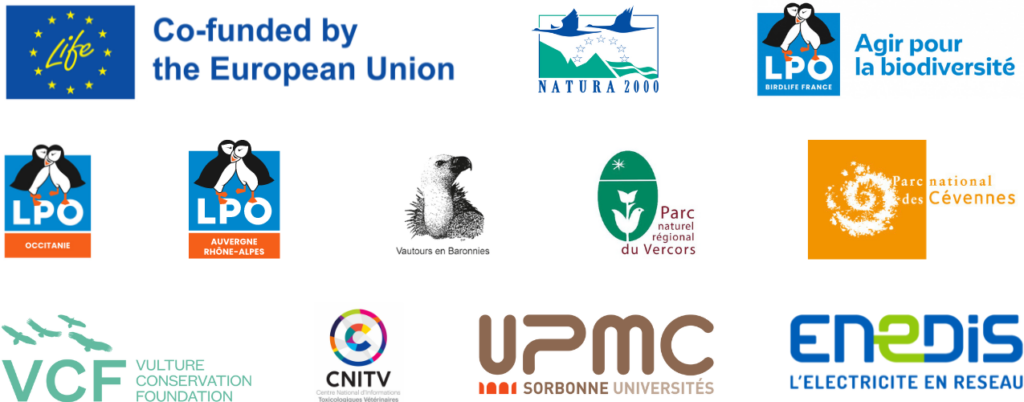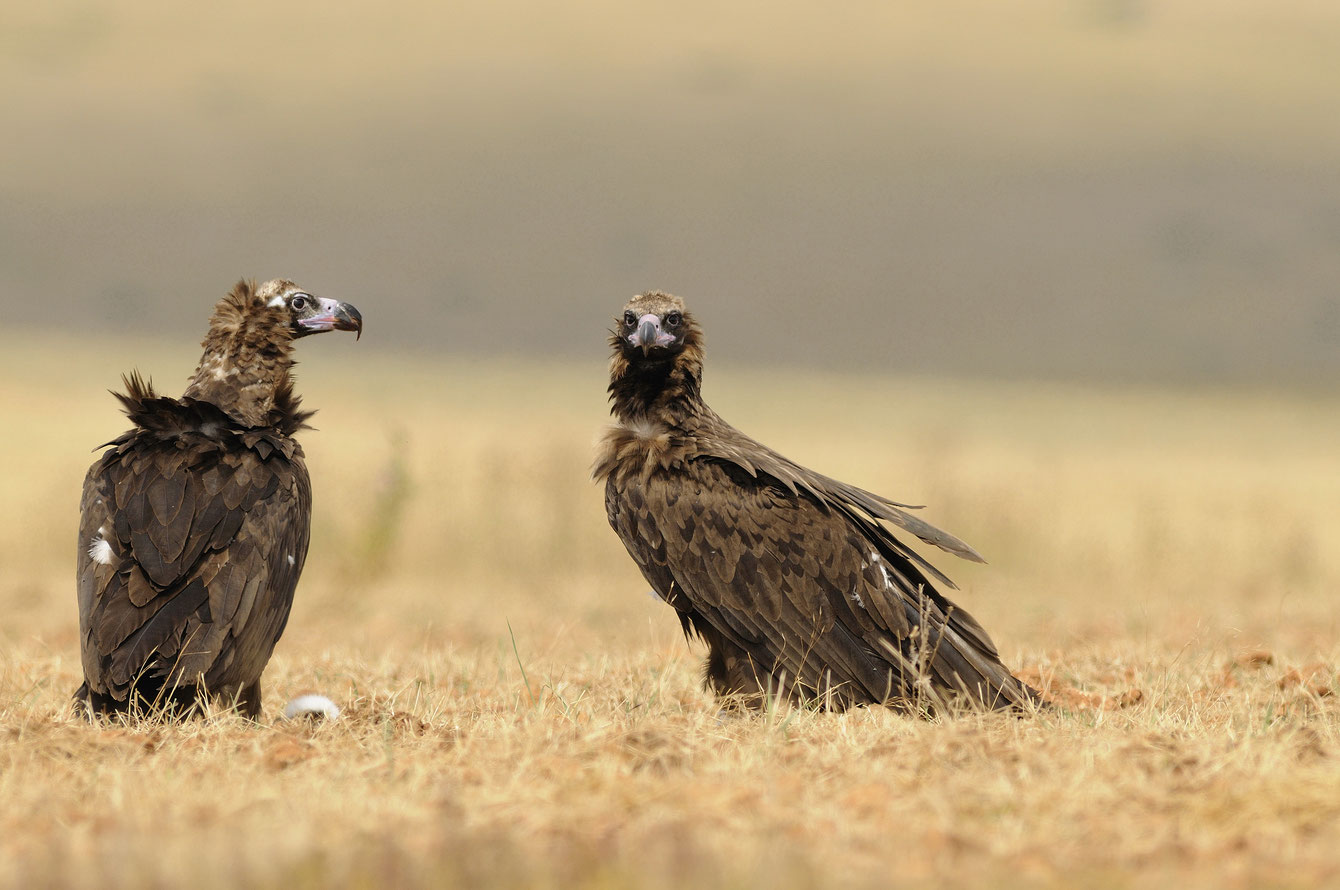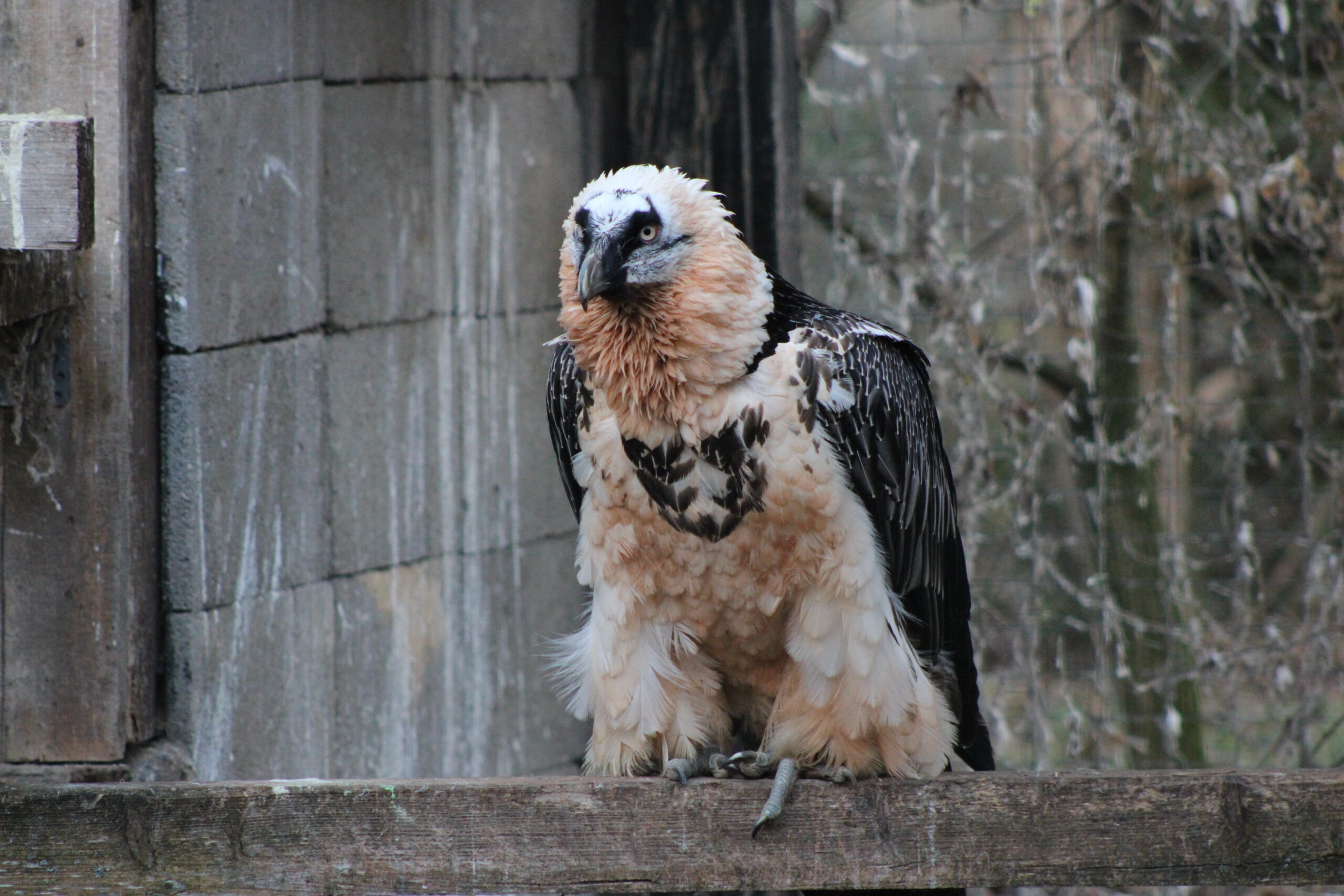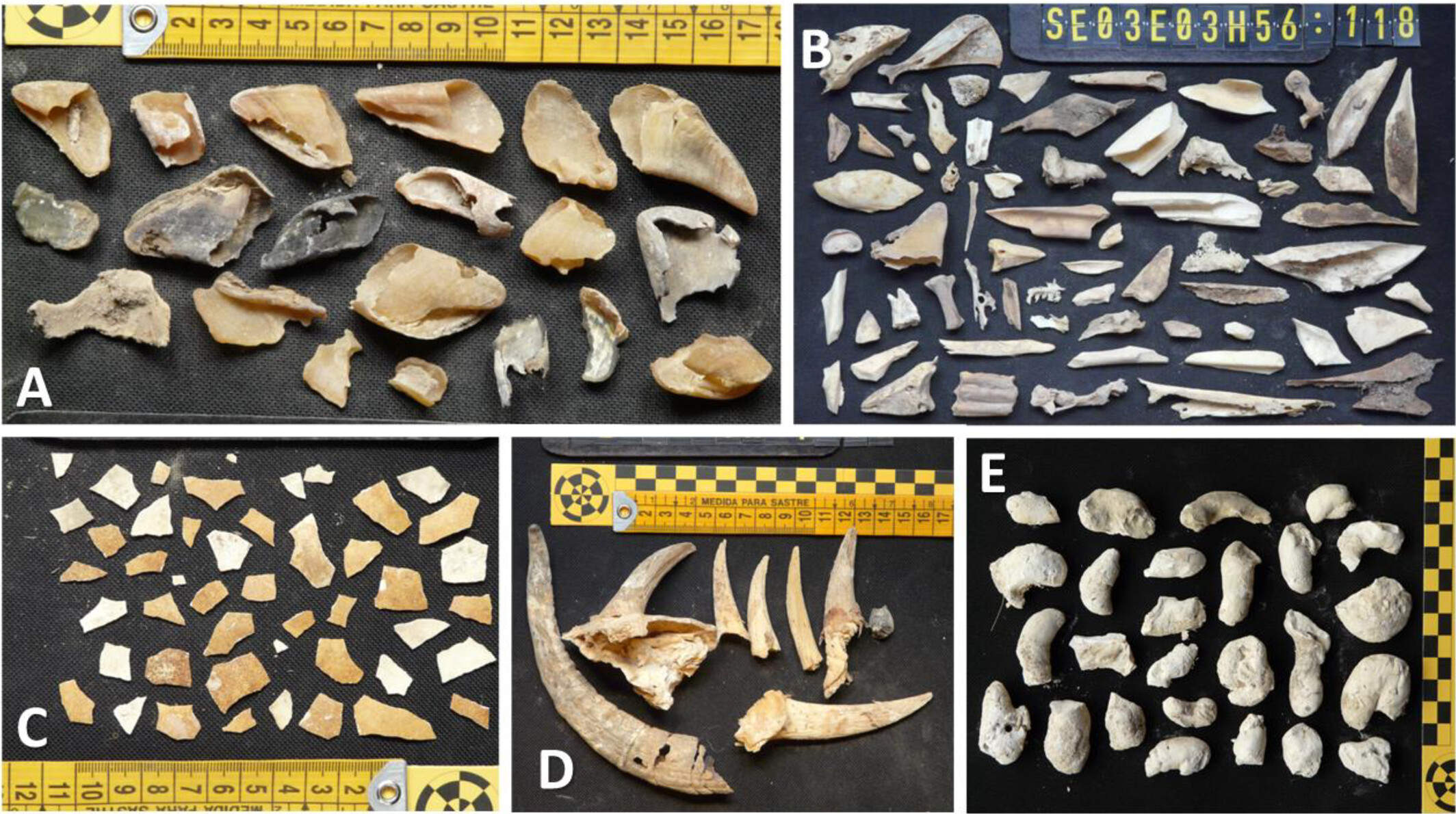The 2025 Bearded Vulture (Gypaetus barbatus) reintroduction season in the Grands Causses, France, began with the release of three young birds: Ubac, Ushuaïa, and Univers. Now, months later, the two eldest have fully taken to the skies and established themselves as independent and confident young vultures. Their journeys have been anything but linear, marked by challenges, resilience, and steady progress toward independence.

Ubac’s challenging beginnings
Ubac was the first to take off on June 23, at 122 days old. His first flights around the release area were short but encouraging, allowing him to explore and familiarize himself with his surroundings. However, the following days brought scorching heat and repeated summer storms, creating difficult flying and foraging conditions.
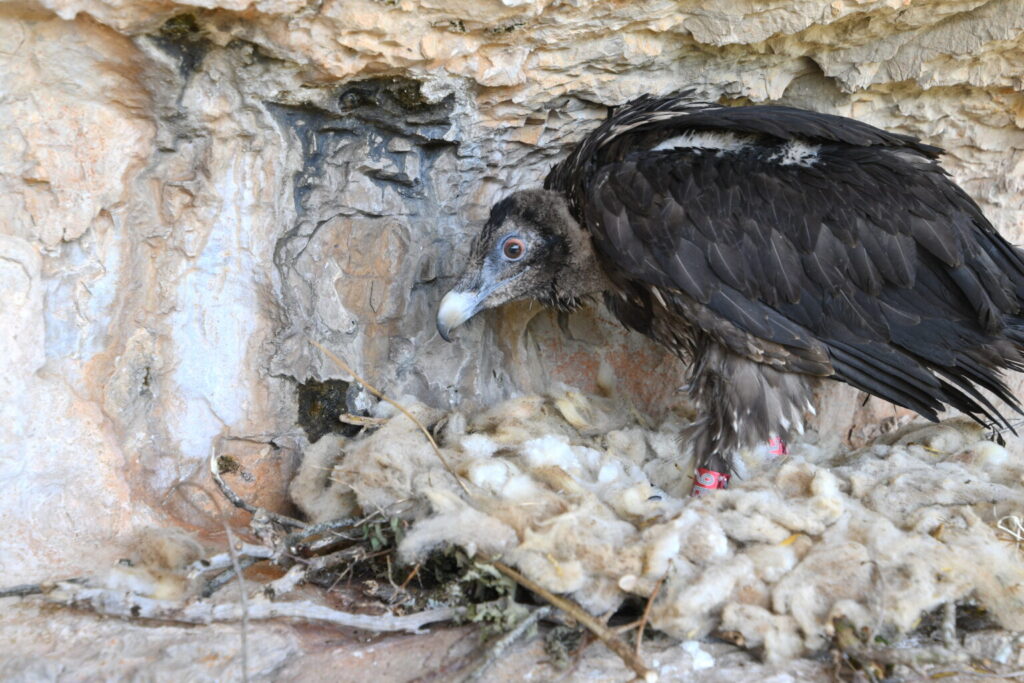
Reduced food intake and dehydration soon weakened Ubac. On July 2, the monitoring team had to intervene after the bird landed in a densely wooded area from which he could not easily take off. Once safely recovered, Ubac returned to the ledge, where he could rest, preen, and feed in abundance.
After three days of recovery, Ubac was ready to take to the air again. Renewed and stronger, he resumed exploring the surrounding gorges and cliffs. Benefiting from calmer weather, his confidence and endurance improved rapidly — with longer flight times and expanding flight ranges. Regular visits to the release site for food and water confirmed his good adaptation and steady development.
Ushuaïa follows with grace
Just over a week later, on the morning of July 1, Ushuaïa — then 120 days old — took her first flight. She landed just below the ledge and remained there for several hours, carefully observing her new world before continuing her explorations.
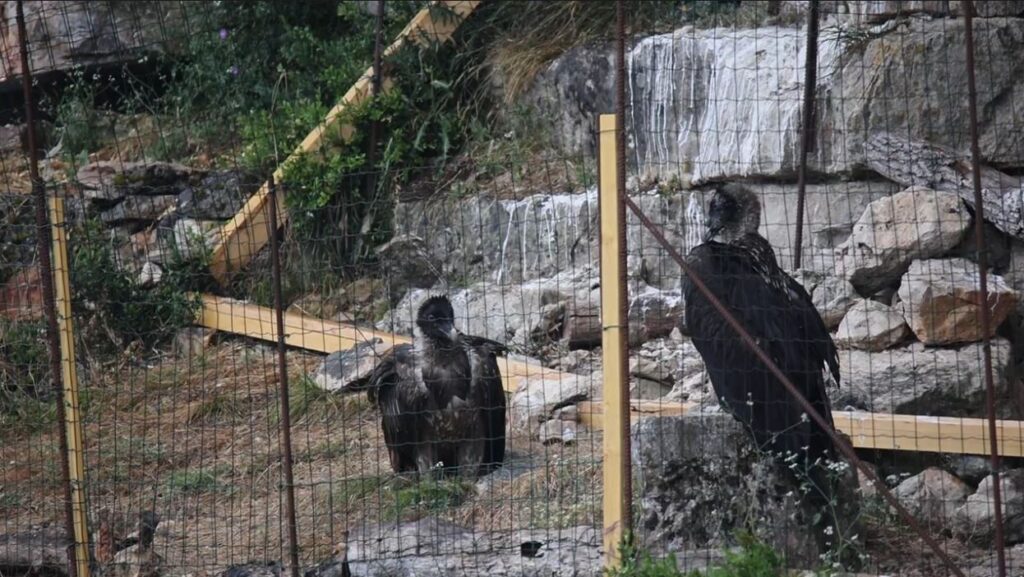
In the following days, Ushuaïa displayed remarkable poise in flight and quickly learned where to find food and water around the release site. Like Ubac, she combined moments of exploration with periods of rest, gradually extending her flight range as her strength and confidence grew.
Companionship and challenges in the sky
Even before their first flights, Ubac and Ushuaïa had built a close bond on the ledge — and this companionship continued once they started flying. The pair were often seen together, flying in tandem or resting side by side. They even shared meals, though Ushuaïa was sometimes less enthusiastic about sharing her portion.
Their cooperation proved valuable when facing the many challenges of their early weeks. Both birds were subjected to harassment from local avifauna — kestrels, crows, Griffon and Cinereous Vultures, and even Golden Eagles. On several occasions, the monitoring team’s anxiety peaked during interactions with older Bearded Vultures, particularly a five-year-old male named Peyre, who showed occasional aggression.
Despite losing a few feathers in one such encounter, Ubac’s flying ability was unaffected. The young vultures adapted quickly, learning to assert themselves when necessary and to remain discreet around older birds. Over time, they were even seen successfully defending feeding spots from other vultures and corvids — clear signs of growing confidence and social maturity.
Expanding horizons
As the weeks passed, Ubac and Ushuaïa ventured further from the release site in the Trévezel Gorges, exploring Mont Aigoual, the Causse du Larzac, the Jonte Gorges, and Causse Bégon. They began choosing roosting sites farther from the release area, returning periodically to feed and drink.
Watch below a recent video recorded by LPO of Ushuaia enjoying a bone snack!
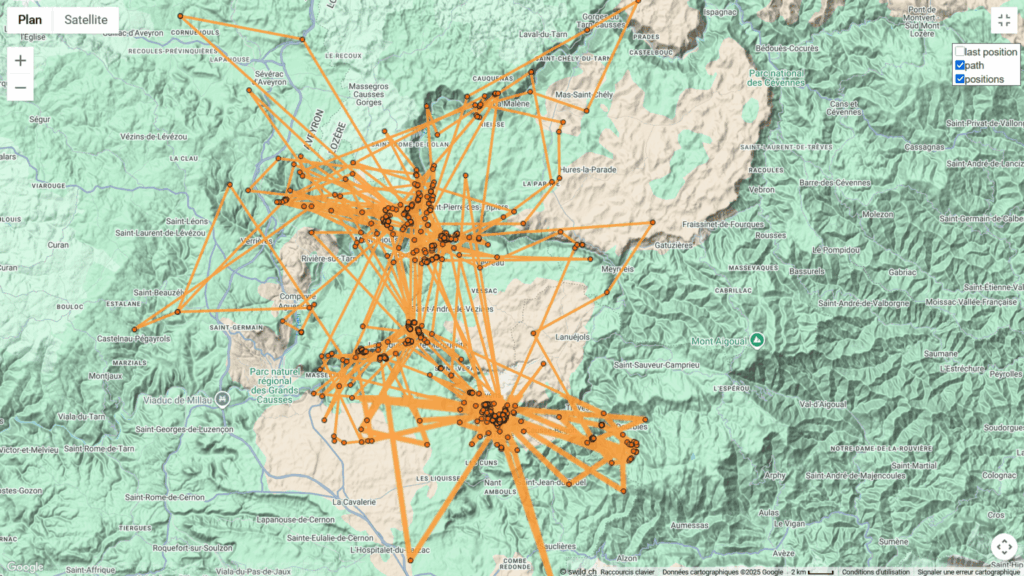
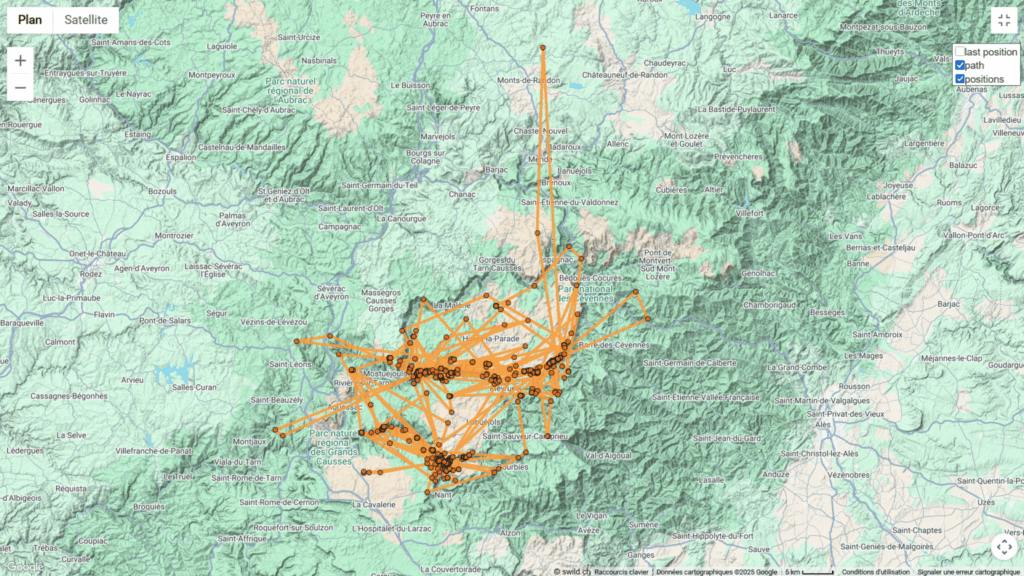
These developments mark the successful completion of a critical stage in the reintroduction process. Both birds have developed strong flying skills, self-sufficiency, and a solid understanding of their environment — key attributes for long-term survival in the wild.
Looking ahead
With Ubac and Ushuaïa now fully independent, the 2025 cohort adds another chapter to the ongoing effort to restore a self-sustaining Bearded Vulture population in southern France.
It is our hope that, in a few years’ time, both will settle and reproduce in the Grands Causses!

LIFE Gyp’Act is a 13M€ project, co-funded by the EU’s LIFE programme, that will run until 30 November 2028. Project partners are LPO – Ligue pour la Protection des Oiseaux as coordinator beneficiary, and the Vulture Conservation Foundation, Association Vautours en Baronnies, LPO Auvergne-Rhone-Alpes, LPO Occitanie, Sorbonne Université, ENEDIS, Centre National d’Informations Toxicologiques Vétérinaires, Parc National des Cévennes and Parc Naturel Régional du Vercors as associated beneficiary.
